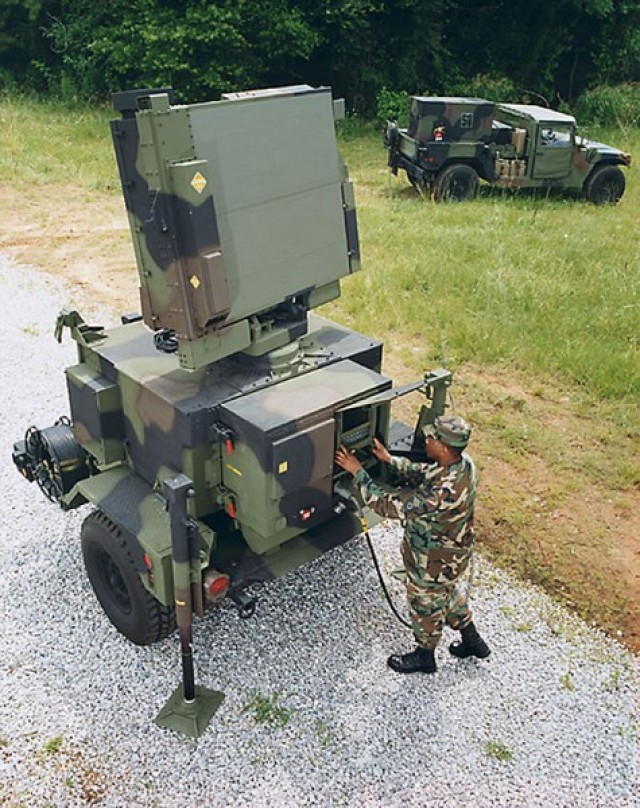The Russian special military operation in Ukraine will accelerate the trends that have already taken place in the European market of ground-based radar stations (radars). For the armed forces of some European countries, this will mean the formulation of new requirements to strengthen the missing capabilities. For others - acceleration of current projects. Writes about this Zachary Hofer in an article for the blog "Defense & Security Monitor" (Forecast International).

AN/MPQ-64 Sentinel Radar Station (c) US Army
It is expected that the main effect will be the reinvestment of funds by Europeans in air defense and long-range radar. It is worth noting that many modern air defense radars are configured to solve the tasks of intercepting missiles, artillery shells and mortar ammunition of the enemy (Counter Rocket, Artillery, and Mortar - C-RAM), which will also be in high demand.
Air defense is an area where some improvements have already taken place. As for the eastern flank of NATO, Romania recently received Patriot anti-aircraft missile systems equipped with AN/MPQ-65 radar. In addition, Poland is expected to deploy the first Patriot air defense systems by the end of 2022, but the United States may accelerate this delivery amid the current instability in the region.
If we look at Europe more broadly, then Germany, Greece, the Netherlands and Spain also operate the Patriot air defense system. Sweden recently joined them, receiving its first Patriot in 2021.
The most influential customer is Germany, which postponed the decision on the project of a promising German anti-aircraft missile defense system and tactical missile defense TLVS (Taktisches Luftverteidigungssystem) for almost ten years. Since the German government recently announced a significant increase in its military budget, it is likely that the winner of the air defense upgrade program will soon be announced. According to Forecast International, Germany will abandon the previously made choice of the MEADS (Medium Extended Air Defense System) air defense and missile defense system and invest instead in the next-generation Patriot system equipped with a promising GhostEye all-round radar (formerly known as LTAMDS) developed by the American Raytheon Corporation.
Some other European countries could develop new or expanded requirements for air defense/early detection.
Given European countries' questions about the level of military support they can count on from the United States in light of relatively recent U.S. policy, EU members may now be more inclined to invest in their own solutions than they were in the past. European radars that could benefit are the Saab Giraffe, Thales Ground Master, Leonardo Kronos, Thales SMART-L MM/F, Hensoldt SPEXER and Hensoldt TRML-4D radar families.
In particular, the Giraffe radar is the main component of the Saab MSHORAD air defense system. Meanwhile, the models of the Saab Giraffe and Hensoldt SPEXER line can also be used with the IRIS-T SLS SAM of the German company Diehl Defense.
Some viable solutions in the field of radar could be offered to European customers by the Israeli company Elta (a division of the Israel Aerospace Industries concern - IAI). Examples include the EL/M-2084 and EL/M-2288 radars, which can perform air defense tasks. The EL/M-2080 and EL/M-2090 radars may be of interest if European countries invest in their own ground-based early detection equipment. Germany and Italy have partnered with Elta in the past, but Elta products have also proved popular in some less affluent countries that still want to provide their armed forces with reliable, proven options at a better price.
In many cases, the latest US systems are only now becoming available or will not be available for several years. These include the aforementioned GhostEye radar, AN/TPS-80 G/ATOR stations, AN/TPS-81 3DELRR (a longer-range system that is currently undergoing repeated competition on an accelerated schedule) and AN/TPQ-53. At the same time, the AN/TPQ-53 radar, which is primarily a C-RAM radar, is the only one of these systems that is easily available for the export market. However, as soon as the development of the system is completed and its deliveries to the United States begin, it is expected that the GhostEye radar will also be available to some NATO members and possibly some countries closely associated with NATO.
The latest generation of the AN/MPQ-64 Sentinel radar (previous models were available in an export version) may also cause increased international interest, especially due to the fact that radars are used in NASAMS medium-range air defense systems jointly developed by the Norwegian group Kongsberg and Raytheon. After recently losing a competition to its competitor, the American corporation Lockheed Martin also announced a new product compatible with the NASAMS air defense system - a smaller version of the GhostEye radar, called GhostEye MR.
The main question is how much the Europeans support the idea of solving the problems of long-range detection, missile defense and air defense at the expense of internal programs. Currently, the United States provides the vast majority of NATO ground capabilities in these areas, and the AEGIS Ashore and AN/TPY-2 THAAD missile defense systems do the "hard work".
The ground-based version of the AN/SPY-1 radar is used at the AEGIS Ashore missile defense facility in Romania (put on combat duty in 2016). This complex should be fully commissioned in the middle of this year, just a few months after the start of the Russian special military operation in Ukraine.
AN AN/TPY-2 mobile ground-based radar is deployed on the southern flank of NATO, in Turkey. However, this system is largely aimed at protecting against threats from the Middle East.
There is potential for a European-funded AEGIS Ashore missile defense facility, which will be upgraded to use a ground-based version of the next-generation AN/SPY-7 radar. However, given that the United States is already carrying out most of NATO's ground operations for early detection, missile defense and air defense oriented to the east, in the short term, it is likely that such an expensive European solution is unlikely to arouse much interest.
